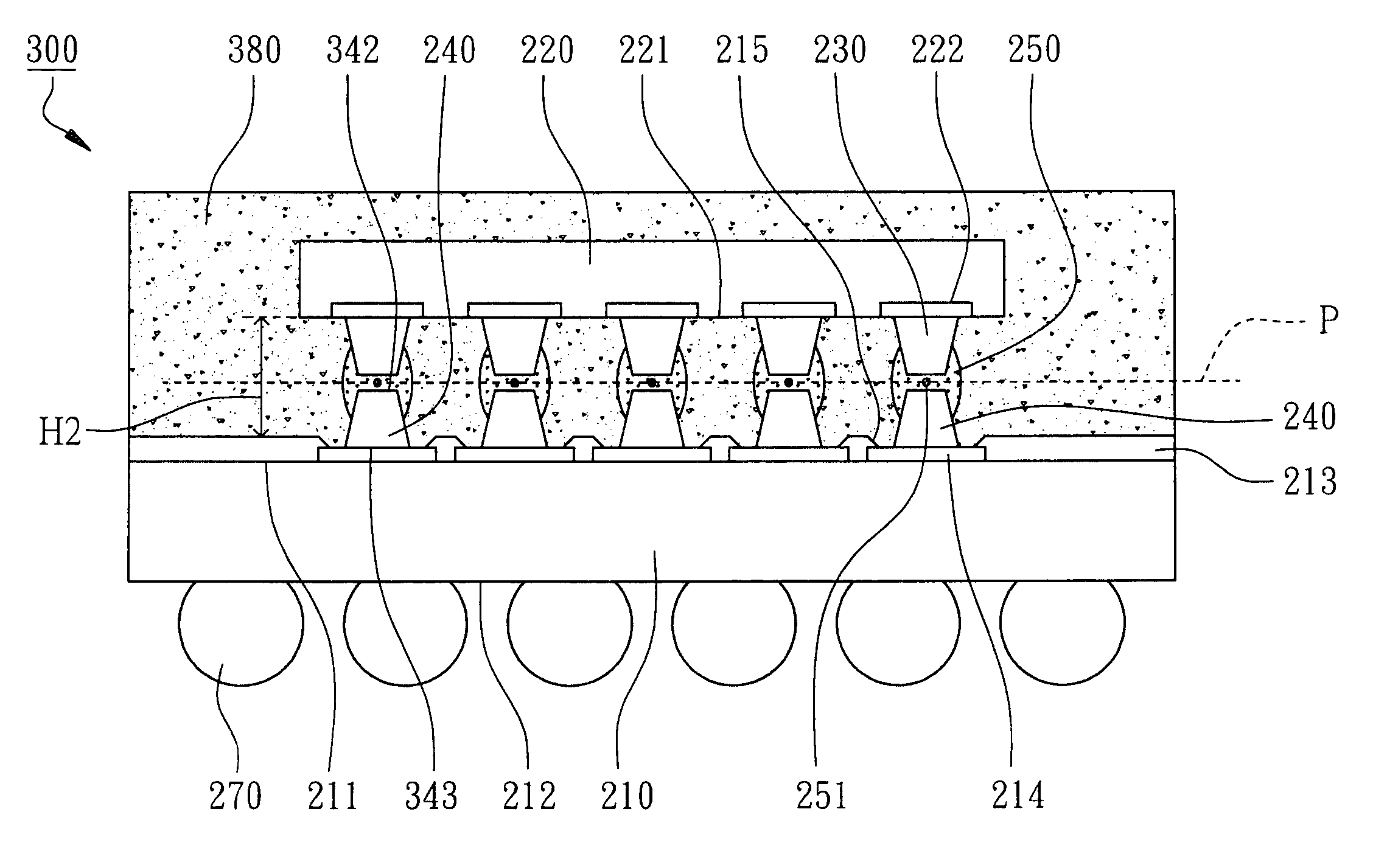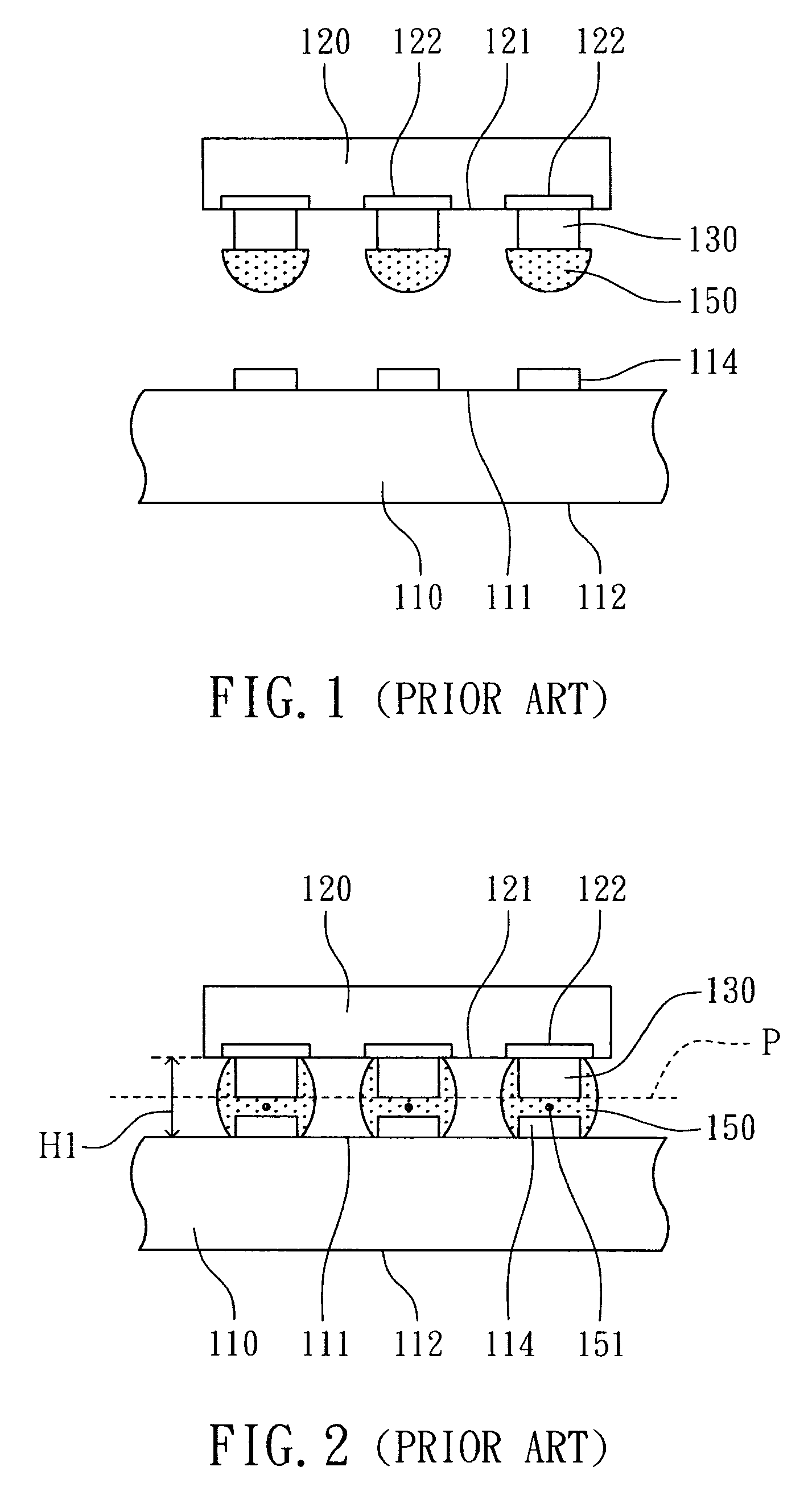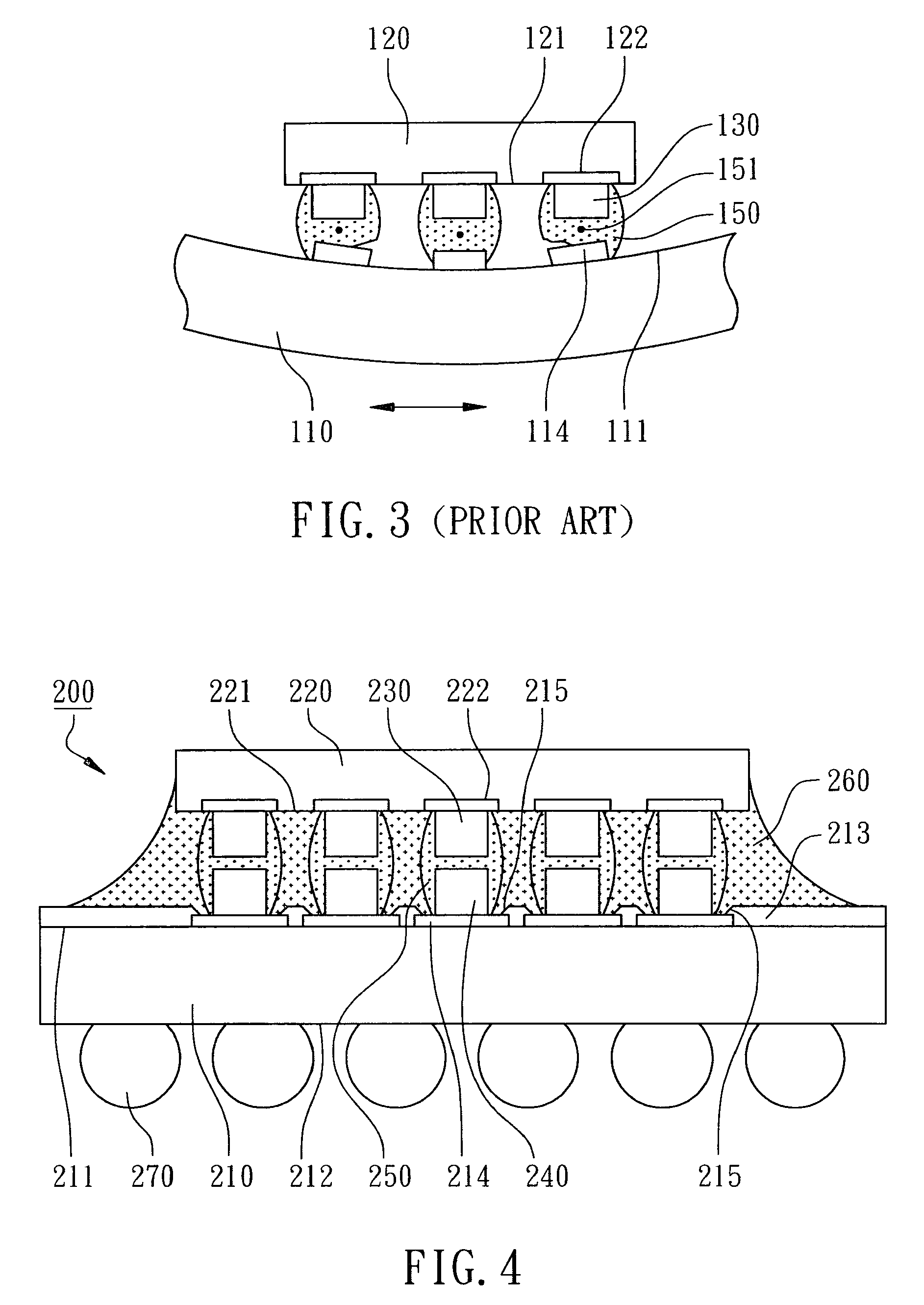Pillar-to-pillar flip-chip assembly
a flip-chip and pillar technology, applied in the field of semiconductor devices, can solve the problems of high cost of gold bumps, reliability problems, and failure of electrical connection between chips and substrates, and achieve the effect of avoiding peeling or breaking of solder joints and reducing thermal stresses
- Summary
- Abstract
- Description
- Claims
- Application Information
AI Technical Summary
Benefits of technology
Problems solved by technology
Method used
Image
Examples
Embodiment Construction
[0026]Please refer to the attached drawings, the present invention is described by means of embodiment(s) below.
[0027]According to the preferred embodiment of the present invention, a pillar-to-pillar flip-chip assembly is illustrated in FIG. 4 for a cross-sectional view.
[0028]The pillar-to-pillar flip-chip assembly 200 primarily comprises a substrate 210, a chip 220, a plurality of first copper pillars 230, a plurality of second copper pillars 240, and a soldering material 250.
[0029]The substrate 210 has a top surface 211 and a corresponding bottom surface 212 which is a high-density, double-sided, multi-layer printed circuit board with internal conductive traces and vias manufactured. The substrate 210 can be one of the array units of a substrate strip and after package saw to become the substrate 210 described in the present embodiment. A solder mask 213 is formed on the top surface 211. A plurality of bump pads 214 are disposed on the top surface 211 with the bump pads 214 expos...
PUM
 Login to View More
Login to View More Abstract
Description
Claims
Application Information
 Login to View More
Login to View More - R&D
- Intellectual Property
- Life Sciences
- Materials
- Tech Scout
- Unparalleled Data Quality
- Higher Quality Content
- 60% Fewer Hallucinations
Browse by: Latest US Patents, China's latest patents, Technical Efficacy Thesaurus, Application Domain, Technology Topic, Popular Technical Reports.
© 2025 PatSnap. All rights reserved.Legal|Privacy policy|Modern Slavery Act Transparency Statement|Sitemap|About US| Contact US: help@patsnap.com



